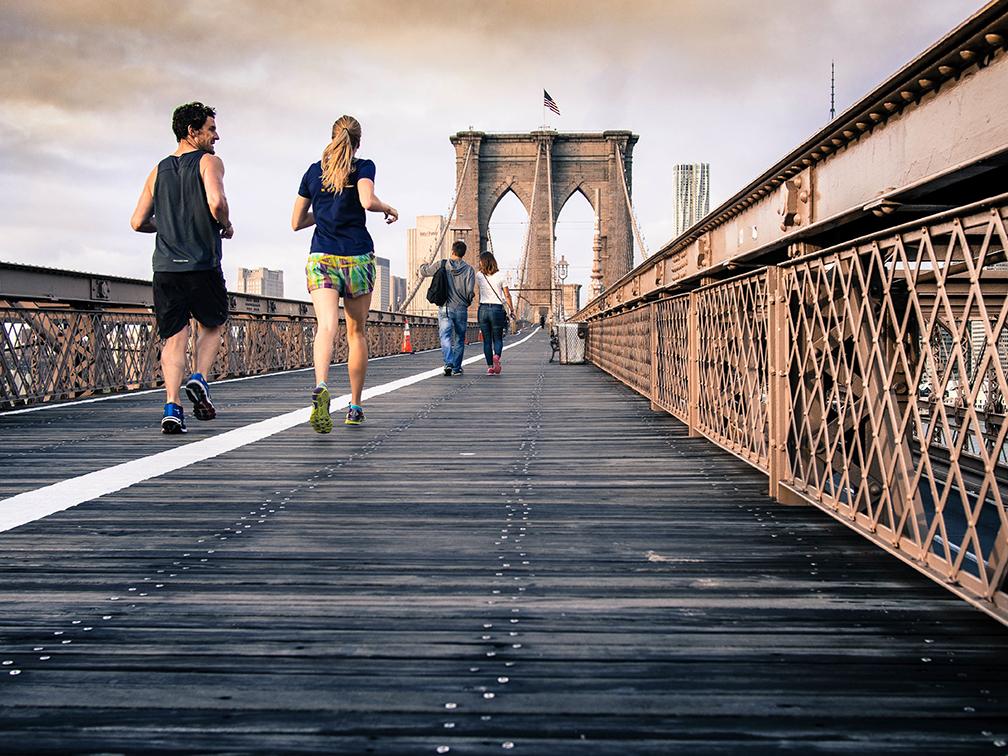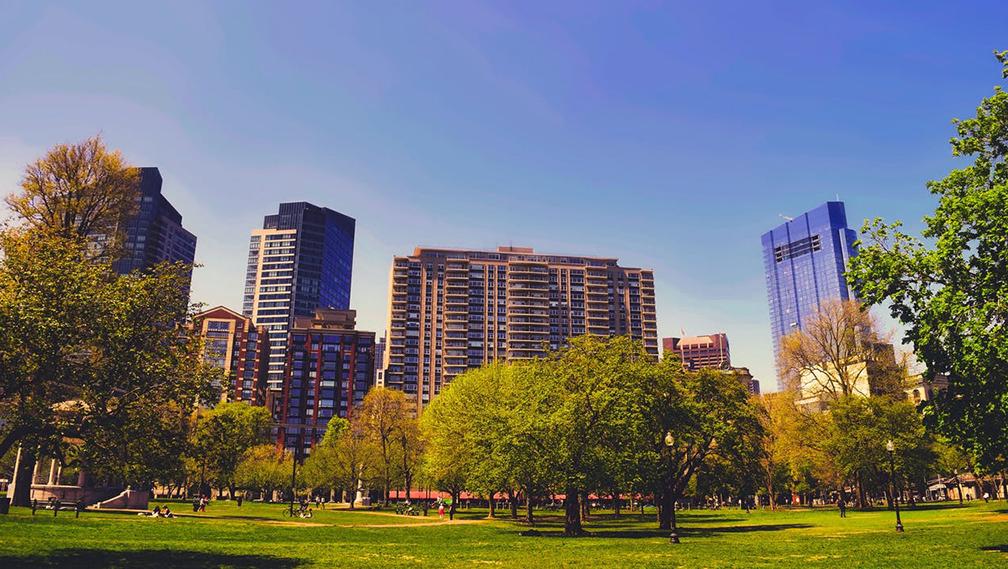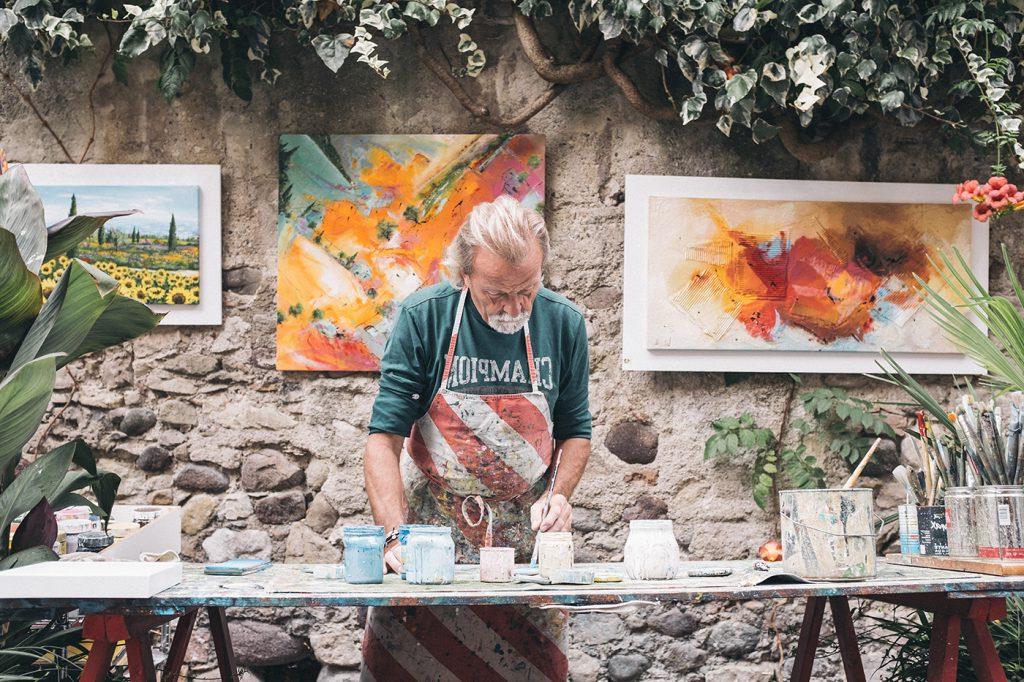Five Steps to Mental Wellbeing
By Katie Endicott
Date
May 8, 2017Mental wellbeing is just as important as physical wellbeing. However, as citizens living in fast-paced urban environments, do we actively take care of our mind as much as we do our body?
A recent study showed that the impact of mental health and stress in the workplace is now at an all-time high. Stress is the leading cause of long-term absence (53 per cent) and the second-highest cause of short-term absence (47 per cent).
Whilst at work, or during our daily lives, there are many things we can do to ensure a healthy mental state. Five simple steps that can make a big difference include: exercise, connections to nature, healthy eating, creativity, and learning.
Many of these steps require a change in behaviour, but what if our cities and the places where we live, heal, learn and move were designed with our mental wellbeing in mind?
Exercise

Exercise has many mental health benefits, including stress relief, improved memory, better sleep and boosting your overall mood. It can give you a ‘sense of feeling good’ and helps us feel connected to our community and surroundings; in essence it can give us a sense of purpose.
Today, many employers are creating wellness and exercise programmes, which are being endorsed by universities, such as UCLA. As designers, we must be cognisant of supporting these trends, and explore initiatives such as the WELL Building StandardTM that features ‘fitness’ as part of its certification.
Beyond the workplace, exercise in public, urban environments is not favourable for people that suffer from mental health issues, especially people that suffer from anxiety. The Centre for Urban Design and Mental Health advocates the framework ‘Mind the GAPS’ : green place, active place, pro-social place and safe place. This urban design framework combats a number of issues, but in the case of exercise it aims to promote fitness and wellbeing whilst addressing citizen’s mental wellbeing.
Exercise is a cornerstone of wellbeing for mental and physical health. Recent research shows that people who cycle and walk to work live longer and are at lower risk of developing cancer and cardiac disease that those who do not. A meta-analysis of other studies on the subject found that for people already suffering from depression, physical activity can be as effective as psychotherapeutic techniques to treat the disorder.
Nature

Business Insider Magazine recently reported 11 Scientific Reasons why connectivity with nature makes you happy. Improved short-term memory, stress relief and improved concentration were a few of the benefits outlined in the article.
We all recognise that green, open spaces in cities and towns are good for us, but can we take this a step further? Healthcare programmes, including Green Care could influence the types of green spaces we design into our cities. It encourages activities such as care farming, environmental conservation, and social and therapeutic horticulture. We have to remember that nature doesn’t just encapsulate flora and fauna, but wildlife too.
A recent study by University of Derby and The Wildlife Trusts following their ‘30 Days Wild’ campaign reported that that the number of people reporting their health as “excellent” increased by 30%. The Wildlife Trust said:
“We hope that [these] results show how nature isn’t just a nice thing to have – although it has a huge value in itself – it’s fundamentally important for our health, wellbeing and happiness and that ought to be reflected in our education system, in the way we treat the physically or mentally ill, in the way we build infrastructure and houses and in how we access and protect green spaces in cities. Ultimately we want to see everyone taking action to restore nature – for nature’s sake and for ours.”
Healthy Eating

Our diet is pinnacle to our mental wellbeing and the way we are feeling. The charity Rethink Mental Illness recently promoted a book by Rachel Kelly, a writer and mental health campaigner called ‘The Happy Kitchen: Mood Boost Food’. Interestingly, her thinking isn’t just about ‘happy foods’ such as leafy vegetables, dark chocolate and oily fish, but the act of cooking itself as an approach to better mental health.
But living in a city isn’t always conducive to healthy eating, where many urban high streets are littered with unwholesome, fast food outlets especially in deprived areas. So making healthy food more accessible, it is about the right local and national policies, good urban planning, education and initiatives such as the Eat Well Move More Shape Up Action Plan 2017-2020 launched by Blackburn and Darwen Borough Council.
Education about food is very important, especially for children. The World Health Organisation states that between 10% and 20% of children and adolescents experience mental health disorders. From a design standpoint, we must help create healthy learning settings, giving children access to regular nutritious food, water to rehydrate and landscaping that promotes food production.
Creativity

Creative activities such as music, visual arts, dance and writing are known for improving your memory, communication skills, emotional restoration, and improving the senses. In older age, creativity is also seen to decrease cognitive decline.
According to the Global Wellness Institute, arts and creativity are taking centre stage as catalysts to wellbeing. The recent colouring book craze, is one of the outcomes of this trend that shows that citizens are embracing the link between creativity and mental wellbeing.
The question is, can urban design and architecture make us more creative? At a commercial and social level, the way we shape our cities and buildings can certainly spark collaboration, productivity and innovation. From social hearts where people come together to undertake creative activities through to cultural quarters, creative clusters and innovation districts, we see evidence of creativity shaping our urban environments.
Learning

Learning supports mental wellbeing by creating a sense of achievement and confidence. Harvard Business Review reported that the pursuit for lifelong learning is good for your health, from podcasts to social cookery classes, there is something out there for every learning style.
In our cities, education is changing. As children and adults, we no longer have to sit within the four walls of an education building to learn. Technology and a shift towards place-based learning means that your local community, which is rich in culture and history, as well as socially and digitally connected, is now an immersive learning zone.
So, at a personal level and as urbanists, it is important to remember that there is a fragile interconnection between our minds and our cities







